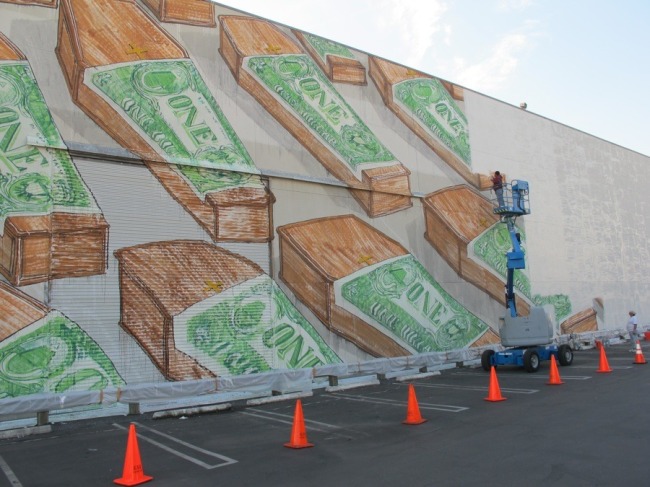1.) MPAA– The Motion Picture Association of America (MPAA) is a representation of the six major film industries: Walt Disney Studios Motion Pictures; Paramount Pictures Corporation; Sony Pictures Entertainment Inc.; Twentieth Century Fox Film Corporation; Universal City Studios LLC; and Warner Bros. Entertainment Inc. (MPAA 2013). The MPAA is responsible for giving a film its rating (G, PG, PG-13, R, NC-17). We learned and saw a lot of the MPAA during the film “This Film Is Not Yet Rated” which dealt with the drawbacks on receiving a higher rating of R or NC-17 and the affects that can have on a movie’s success.
NEA Four- A team of performance artists consisting of John Fleck, Tim Miller, Holly Hughes and Karen Findley that had their NEA grants revoked in 1990. The four took the case to court and won, each being awarded an equal amount of funds. The NEA then decided to not fund individual artists any more after the incident. Perhaps the most controversial part of The NEA Four’s situation was that their grants were vetoed after they had passed their peer review process successfully (NEA Four 2013).
Donohue- Bill Donohue is the president of the Catholic League for Religious and Civil Rights. Bill has more or less attacked a number of artists for their depictions of Jesus that he finds unfavorable, one being Terrance McNally’s Corpus Christi that we read in class. Donohue didn’t like the way Jesus was portrayed in the play specifically that he was a gay man who had sex with his apostles. Donohue raised an issue with many other artists but this being the one we read in class, this is the one I seem to know the most about.
2.) The performance I chose to talk about is this list of banned children’s books that have been banned from many school’s curriculum. Most of the books are banned for themes of homosexuality and how they portray those in the gay community. The list contains a few books but I thought i’d pick the most shocking to me: And Tango Makes Three by Justin Richardson. The artist is trying to tell the (100% true!) story of two male penguins at the New York zoo who never found a female mate, but instead liked each other’s company and looked after an egg together. The egg hatched and became their son. Seems harmless right? Wrong. People freaked out that the penguins were “gay” (I use the term gay loosely here because hey who knows maybe the two penguins just thought girls were jerks and wanted to keep each other’s company because they were just nicer than the other penguins. I mean it could happen right?).
3.) Richardson’s work was just trying to tell us the story of the two penguins in a way that children could understand: with pictures and simple sentences. His work is trying to tell the story and tell the story only. I read through the book and I didn’t get the impression that Richardson was trying to promote homosexuality or anything like that. The support for his argument is that the story is true. There really were two penguins who raised a little egg into a baby named Tango and the artist is trying to tell that story.
4.) Donohue relates to the performance of the book due to the themes of homosexuality in the work. We saw how adamantly opposed to the work “Corpus Christi” Donohue was for it’s portrayal of Jesus as a homosexual. I don’t really see Donohue in the work directly, but one can bet that if this book was read to one of his children he wouldn’t agree with it due to it’s content of gay penguins. Donohue helps us better understand the censorship of this performance because even though homosexuality is a seemingly normal human action, people are still opposed to it and wish to have it disappear from the public eye.
The MPAA relates to the book also because it is the head honcho that censors movies, much like there was a head committee that decided to have the book banned from the school system. The MPAA gives ratings to movies and a lot of those movies end up being documentaries much like the one we watched in class. The MPAA censors real life events and situations, just like the real life event of two male penguins raising a baby together was censored. The MPAA helps us better understand censorship in the way that even if the story is true, it can still be censored. It brings up the question of “can/should we censor real life?” that we discussed in class a few times.
The NEA Four relate to the book in the way that their/its ability to perform was granted then taken away. The book was published and then was decided it was not suitable for children, much in the way that the NEA Four were given funding then had it taken away because it was not appropriate for different reasons. The book also relates to Holly Hughes specifically who was said to be “a lesbian and her work is very heavily of that genre” by John Frohnmayer which is a huge reason she got censored (Hughes 2013). It also related to Tim Miller who was also censored due to his “lush, wall-to-wall homo themes” (Stacy 2007). The NEA Four helps us better understand censorship of this performance for two reasons. One being that people aren’t comfortable with homosexuality and want it out of the public eye. The other being that censorship is not also given from the beginning. Sometimes permission is given and then taken away.

